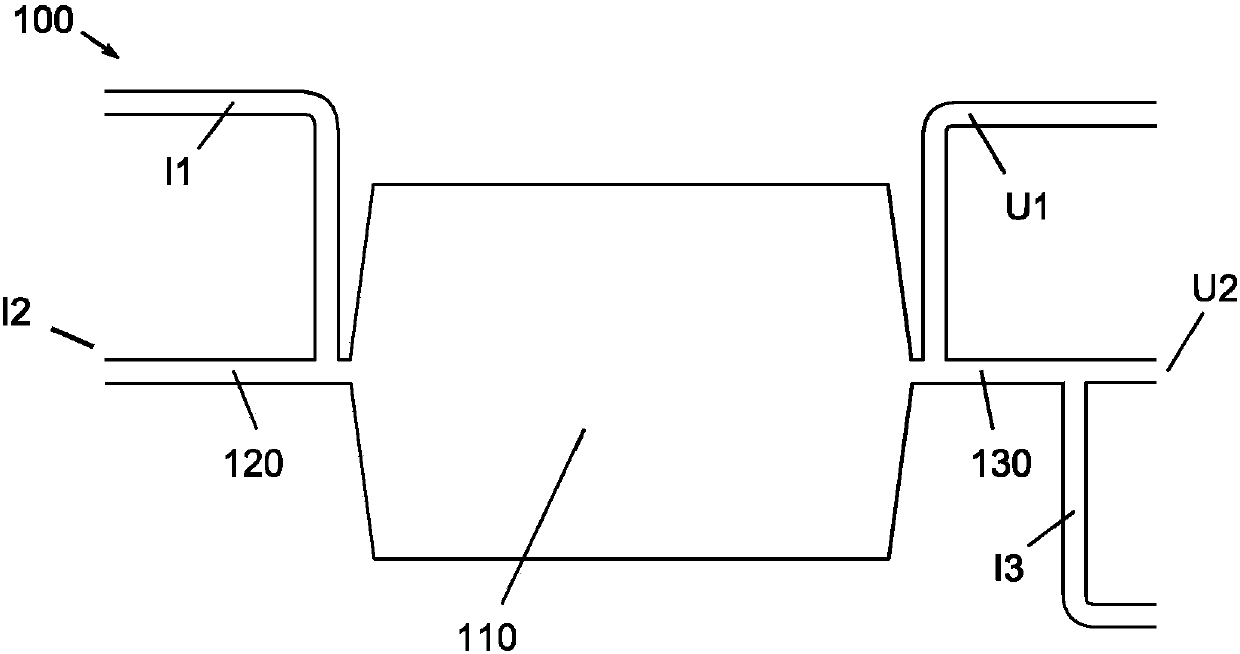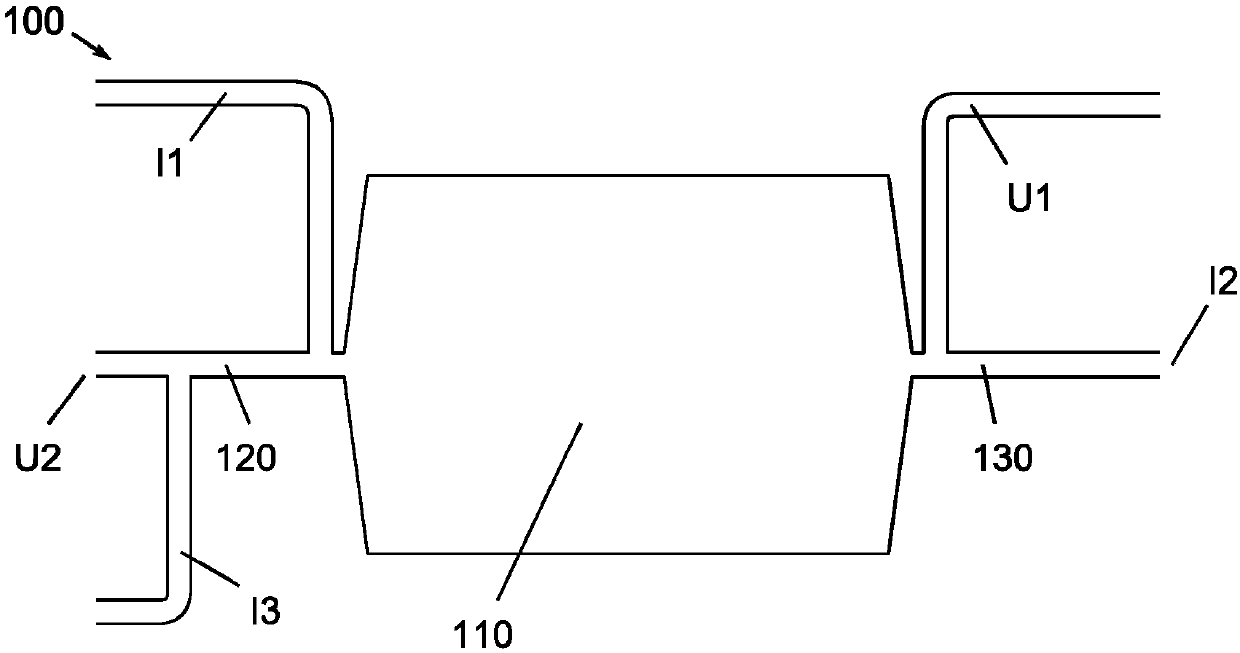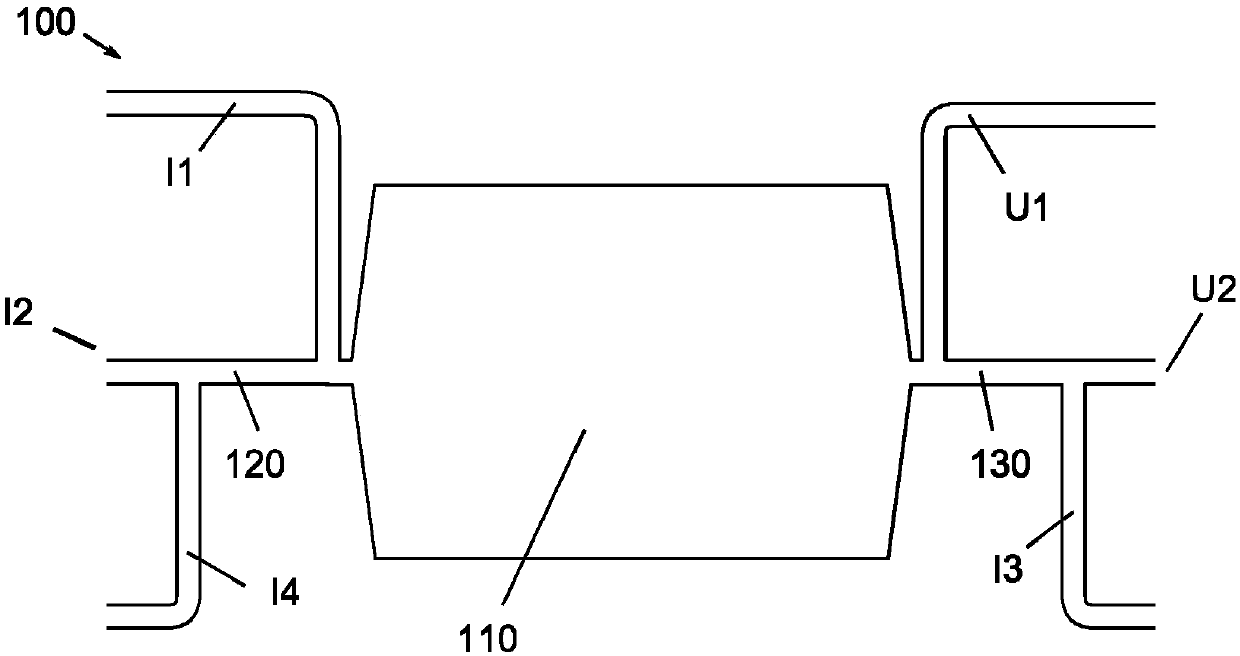Microfluidic device
A microfluidic device and microfluidic technology, applied in the field of chromatographic analysis, can solve the problems of embolism expansion, pollution, and inefficient separation, and achieve the effect of avoiding clogging and avoiding dead volume.
- Summary
- Abstract
- Description
- Claims
- Application Information
AI Technical Summary
Problems solved by technology
Method used
Image
Examples
Embodiment Construction
[0053] The present invention will be described with reference to certain drawings and with respect to specific embodiments, however, the invention will not be limited thereto but only by the claims.
[0054] Reference throughout this specification to "one embodiment" or "an embodiment" means that a particular feature, structure, or characteristic described in connection with the embodiment is included in at least one embodiment of the present invention. Thus, the appearances of the expression "in one embodiment" or "in an embodiment" in various places throughout the specification need not necessarily all be known to refer to the same embodiment, but may do. Furthermore, the particular features, structures or characteristics may be combined in any suitable manner as would be apparent to a person skilled in the art based on this disclosure in one or more embodiments.
[0055] Similarly, it is to be understood that in the description of exemplary embodiments of the invention, var...
PUM
| Property | Measurement | Unit |
|---|---|---|
| width | aaaaa | aaaaa |
Abstract
Description
Claims
Application Information
 Login to View More
Login to View More - R&D
- Intellectual Property
- Life Sciences
- Materials
- Tech Scout
- Unparalleled Data Quality
- Higher Quality Content
- 60% Fewer Hallucinations
Browse by: Latest US Patents, China's latest patents, Technical Efficacy Thesaurus, Application Domain, Technology Topic, Popular Technical Reports.
© 2025 PatSnap. All rights reserved.Legal|Privacy policy|Modern Slavery Act Transparency Statement|Sitemap|About US| Contact US: help@patsnap.com



